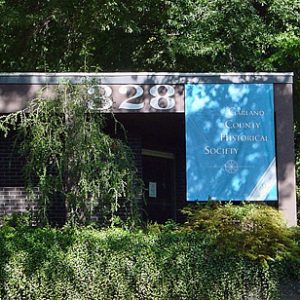calsfoundation@cals.org
Garland County Historical Society
The Garland County Historical Society (GCHS) was organized on April 19, 1960, to preserve and encourage interest in the history of Garland County. The first officers were John Connelly, president; Mary D. Hudgins, vice president; Capitola Glazner, secretary; Dr. Francis J. Scully, treasurer; and Sam Sargo, Nathan Schoenfeld, and Katherine Creason, who formed the board of governors.
The same year it was founded, the society published the first volume of its journal, The Record. Originally a quarterly, The Record is now a yearly publication that has won numerous awards from the Arkansas Historical Association. Inez Cline served as the editor of The Record from 1963 to 1986 and as associate editor from 1987 to 1988. The historical material she gathered formed the basis of the society’s collections, and her research (especially on the communities inundated by Lake Ouachita in 1956) became an invaluable part of Garland County’s heritage. She was followed as editor by, successively, Wendy Richter, Bobbie Jones McLane, Isabel Anthony, and Elizabeth Robbins. Besides serving as The Record editor and society treasurer for many years, McLane became the society’s first executive director in 2001. Robbins became the first full-time, salaried executive director of the society in 2007.
The fifteen books that the society published in its first fifty years contribute much to local history. These include Orval Allbritton’s Leo and Verne: The Spa Heyday, Hot Springs Gunsmoke, and Dangerous Visitors; Gail Ashbrook’s six books about Hot Springs cemeteries; Marcus Phillips’s Indian Folklore Atlas; census record books compiled by Pasty Hall and Mary (Jackie) Cooper; and Observations of Arkansas: The 1824–1863 Letters of Hiram Abiff Whittington, edited by Wendy Richter, Bobbie McLane, and Chuck Cunning. In 2009, partnering with the Melting Pot Genealogical Society, GCHS produced the first comprehensive history of Garland County, the 694-page Garland County Arkansas: Our History and Heritage, edited by Isabel Anthony.
The society was headquartered until 1999 in a succession of rooms in private homes and in public buildings such as a Gulpha Gorge National Park Service building, the Garland County Courthouse, and the Senior Citizens’ building. In 1999, the society purchased a building at 328 Quapaw following a fundraising drive headed by Isabel Anthony, Marty Dalby, and Bobbie McLane. At this location, the society, staffed by dedicated volunteers, archives more than 20,000 photographs, paper ephemera, newspapers, maps, books, manuscript collections, and memorabilia. A room in the society’s archives is devoted to the military veterans of Garland County.
GCHS assists researchers, presents programs to civic and school groups, and holds monthly meetings (September through May) featuring guest speakers. A 501(c)(3) nonprofit organization, the society is funded by donations, membership dues, and publication sales. Its archives are open from 8:00 a.m. to 12:00 p.m., Monday through Friday.
For additional information:
Anthony, Isabel, ed. Garland County, Arkansas: Out History and Heritage. Hot Springs, AR: Garland County Historical Society, 2009.
Garland County Historical Society. http://www.garlandcountyhistoricalsociety.com/ (accessed February 14, 2022).
Richter, Wendy. “A History of the Garland County Historical Society 1960–1985.” The Record 26 (1985): 1–16.
Elizabeth Robbins
Garland County Historical Society
 Historic Preservation
Historic Preservation Garland County Historical Society
Garland County Historical Society  GCHS Interior
GCHS Interior  GCHS Library
GCHS Library 




Comments
No comments on this entry yet.